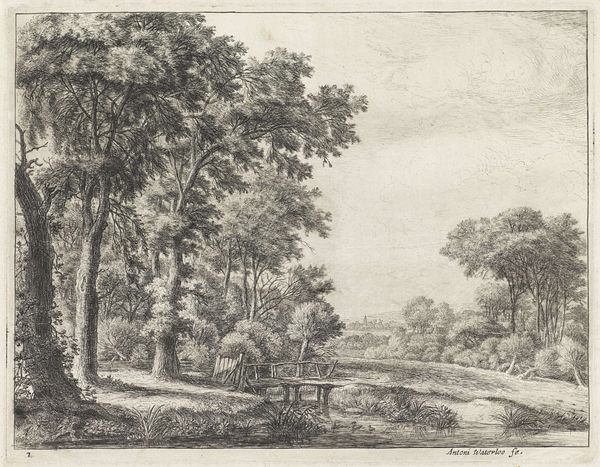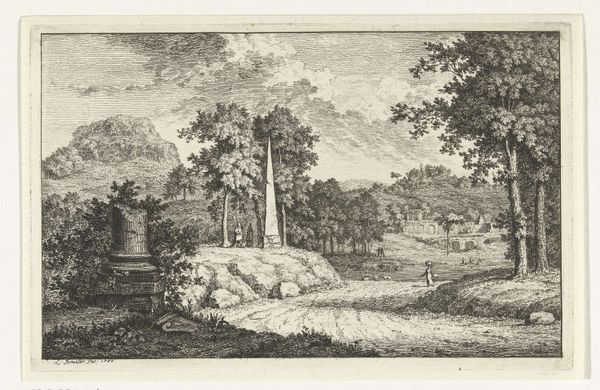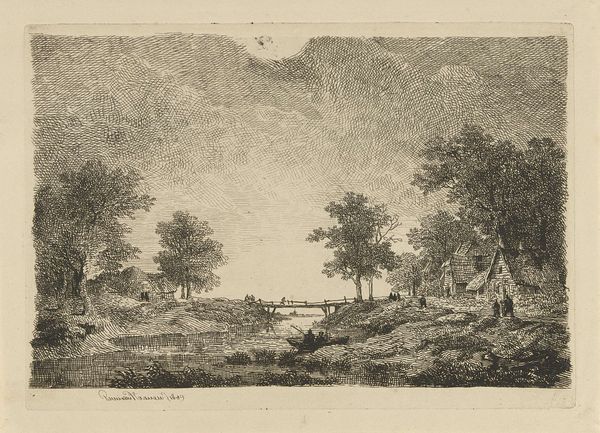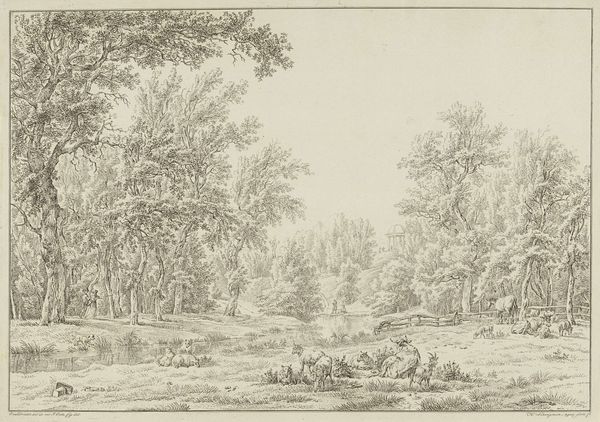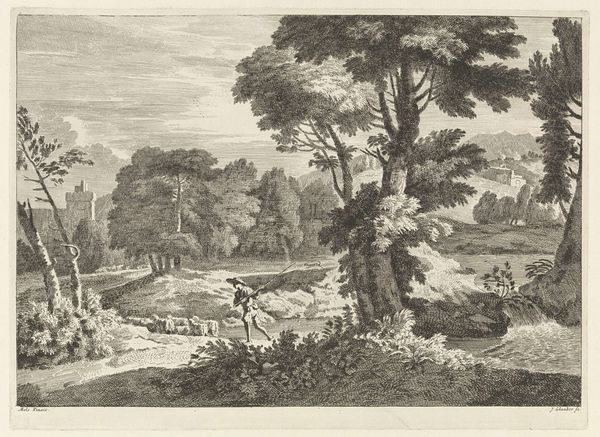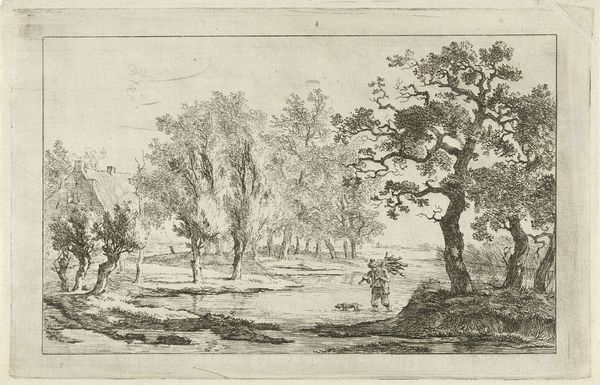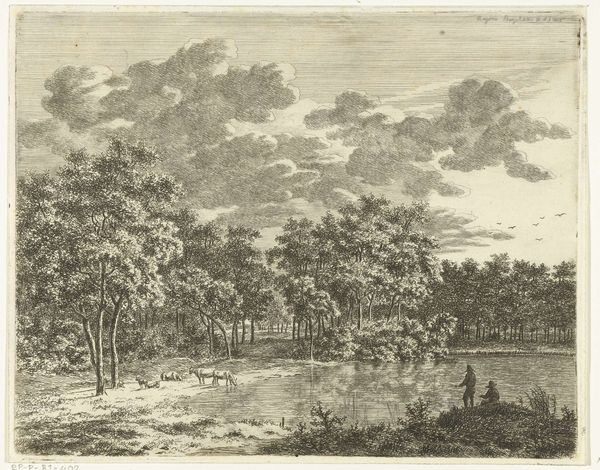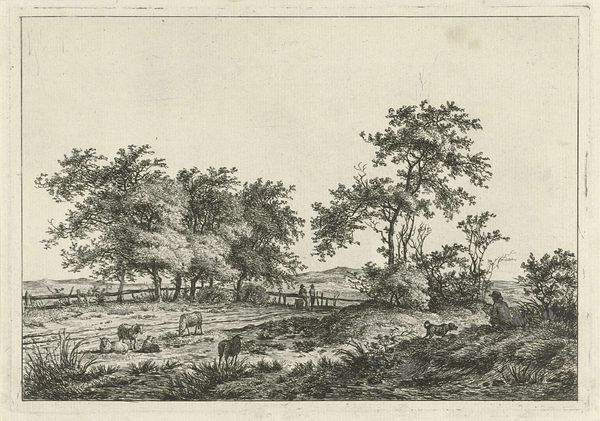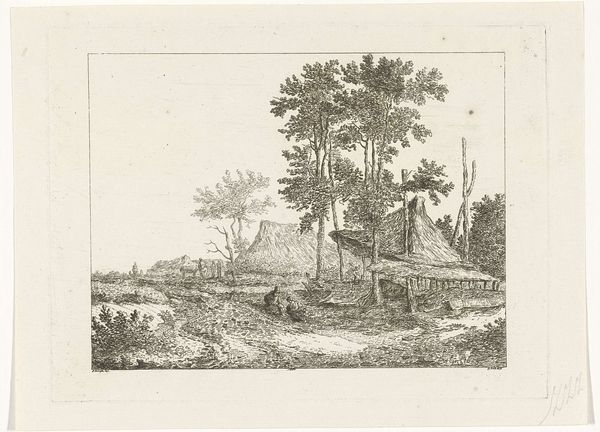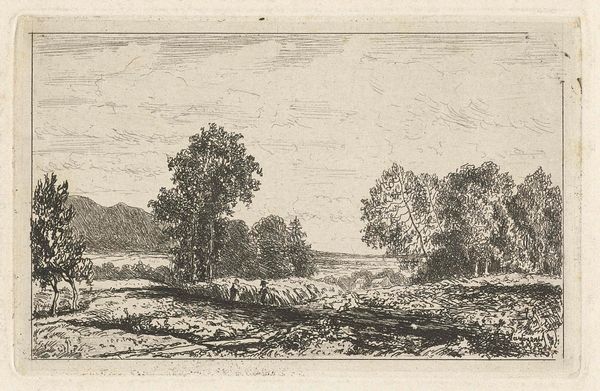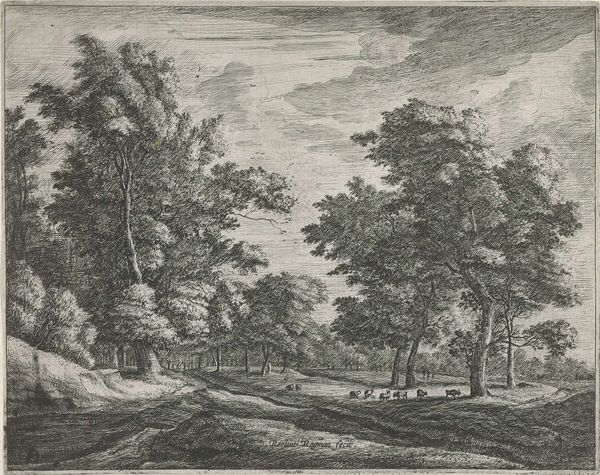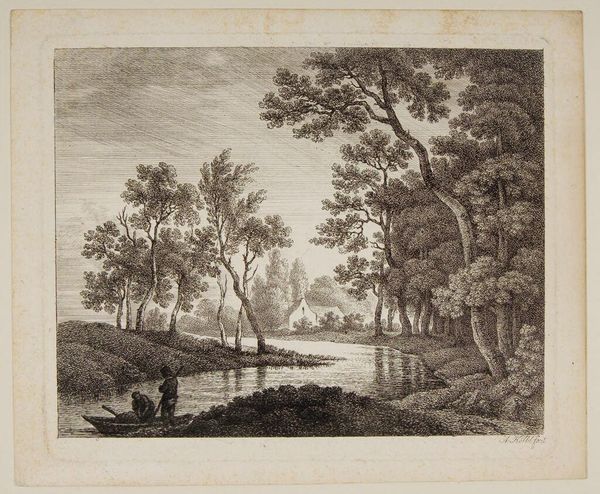
drawing, paper, ink
#
drawing
#
landscape
#
paper
#
ink
#
realism
Dimensions: height 145 mm, width 213 mm
Copyright: Rijks Museum: Open Domain
Curator: We’re standing before Fréderic Thédore Faber's “Bergachtig landschap met rivier,” or “Mountainous Landscape with River,” created between 1837 and 1840. The artwork employs ink on paper, a technique particularly conducive to Faber’s acute rendering of detail. Editor: The most immediate aspect of this drawing is its almost overwhelming calm. The composition draws your eye smoothly from the river at the front to the far hills through tonal contrasts of ink wash that render space as clearly as though it were color. Curator: The burgeoning Romanticism in early 19th century Europe deeply affected art production, valorizing individualism and, of course, an idealized conception of nature. As one examines Faber's oeuvre in context, it is evident how his aesthetic project reflects broader nationalist sentiment as then prevalent in intellectual and artistic milieus. His river valleys aren't simply pleasing vistas, but depictions intended to evoke deep feeling connected to concepts of Fatherland. Editor: While context certainly informs understanding, Faber's skillful use of linear perspective to direct and hold the viewer's gaze is notable; each tree is articulated just enough to capture the light. It creates a kind of optical rhythm. How the clustered hatching on the hill on the right resolves into what appears to be a farm tells us much about how the artist leads the eye, shaping our visual journey. Curator: That’s indeed a fascinating point. The careful detailing serves an ideological function, though. Faber doesn't simply give us ‘landscape’ but reinforces an imagined community by portraying what are, essentially, idealized Dutch archetypes populating that landscape. You find throughout the visual culture from this era a similar tendency of representing national identity via portrayals of the bucolic. Editor: And regardless of the driving impulses behind its creation, one can't deny that Faber’s delicate inkwork rewards closer inspection, allowing us to savor both a sweeping vista, and the beauty inherent in individual brushstrokes. The artist makes a series of compositional choices that render this more than just topographical depiction; the careful application of detail to direct the viewer's eye turns this river valley into a compelling landscape to behold. Curator: The act of portraying landscape and imbuing it with significance allowed people to reimagine their place in an era defined by rapid social changes. Looking at Faber, we are invited to look beyond a singular artwork to comprehend a larger societal imperative: how art makes possible—or at least makes visible—narratives central for galvanizing communal belonging. Editor: Well, either way, spending some time really examining Faber's "Bergachtig landschap met rivier” encourages one to meditate on just how powerful a black line on a white background can be!
Comments
No comments
Be the first to comment and join the conversation on the ultimate creative platform.
